Why Can’t Ghosts Let Go of the Victorian Era?
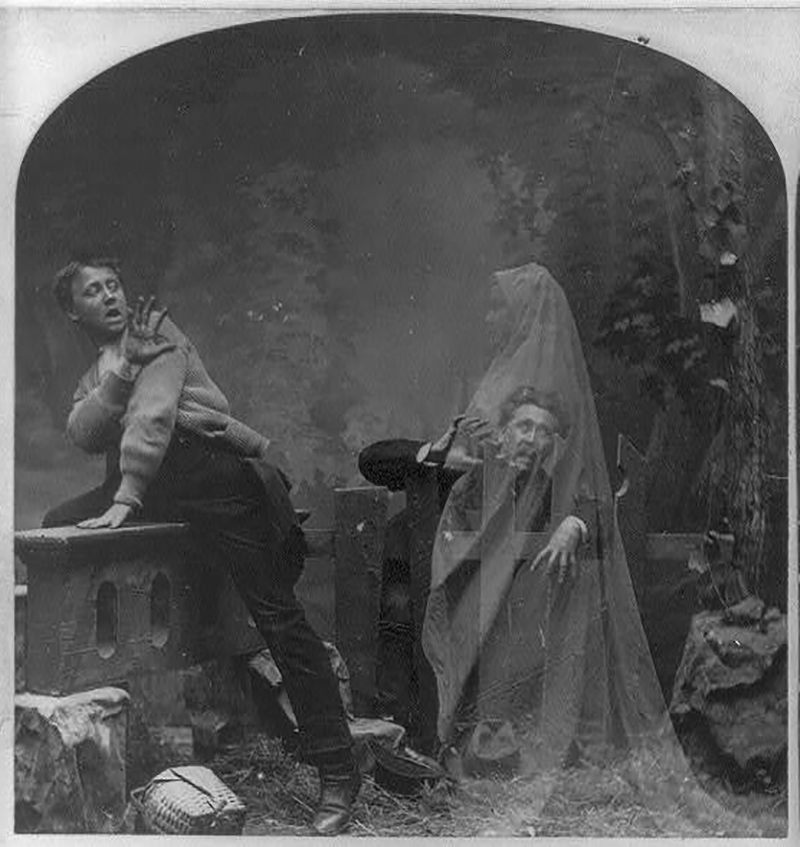
A Victoria-era stereograph showing a ghost scaring man and boy. (Photo: Library of Congress)
When you search for ghost costumes online, you’ll find three major categories. The first is a simple white, flowing gown-type costume: your classic white bedsheet. The second is pop-culture ghosts, whether they’re the murderer from the Scream movies (which was not a ghost, but whatever), Slimer from Ghostbusters, or a bold-striped Beetlejuice suit.
But the third, the Victorian Ghost, is more peculiar. It’s ornate and complex, but not pegged to any particular horror franchise or touchstone ghost. Why does formal Victorian wear, like corsets and lace, read as “ghostly” to us?
The concept of a formerly alive person that can interact with the living world in some capacity is an old one—obviously, this isn’t something invented in the 19th century. There is a medium in the Hebrew Bible that claims to speak to the ghost of Samuel, though we never actually see the ghost of Samuel, like, saying “boo” at people. In other stories, like Homer’s Odyssey, characters visit the underworld and see ghosts, though I’d argue that doesn’t totally count: for a ghost to truly haunt, it must inhabit at least in part the land of the living. These sorts of underworld-dwelling ghosts are usually referred to as “shades” rather than “ghosts.”

An 1843 color illustration of ‘Marley’s Ghost’ from Dickens’ A Christmas Carol. (Photo: Public Domain/WikiCommons)
Ghosts featured in stories from then on forward, but it wasn’t until the Victorian and Edwardian eras that what we know as a “ghost story” really became a hit. Kira Cochrane at The Guardian has a good overview of the era’s intense affinity for ghost stories, pegging the boom in the stories to various technological advances. Among those: the rise of the periodical press. Writes Cochrane:
“Ghost stories had traditionally been an oral form, but publishers suddenly needed a mass of content, and ghost stories fitted the bill – short, cheap, generic, repetitive, able to be cut quite easily to length.”
“There were several very excellent and popular Victorian magazines, including one run by Charles Dickens,” notes Jack Sullivan, a professor of English at Rider University, the editor of The Penguin Encyclopedia of Horror and the Supernatural, and one of the leading literary scholars of the horror genre. Dickens was not a genre writer like his contemporaries Sheridan Le Fanu and M.R. James, but it’s a Dickens story that may be the best-known Victorian-era ghost story today: A Christmas Carol. Published just before Christmas in 1843, A Christmas Carol was, says Sullivan, somewhere near the beginning of the Victorian/Edwardian golden era of ghost stories.
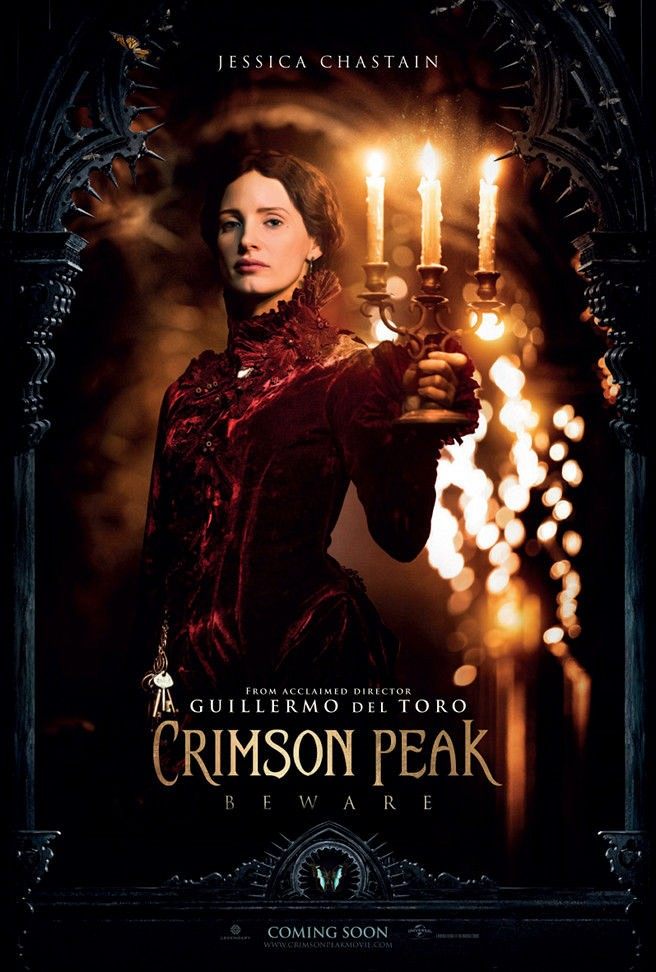
Crimson Peak, today’s Victorian Era ghost story. (Photo: Courtesy Universal Pictures/Legendary)
Another reason for the boom is necessarily contradictory. As Cochrane notes, the Victorian era is perhaps best known for huge accelerations in technological development. This is the era that pioneered trains for the movement of goods quickly, that created the telegraph for instantaneous long-distance communication. Gas power allowed for efficient and cheap lighting, much better than candlelight. London’s first sewage system was created in the mid 1800s. The Victorian era was, quite frankly, terrifying: all of a sudden, magic was made ordinary and tangible.
Because so many things that seemed impossible were made very real all within the span of just a few decades, even though the Victorians were singularly scientifically-minded, they also had a deep love of magic and paranormal spectacles—but as entertainment, mostly, rather than as explanations for the unexplainable. Mediums and seances were fantastically popular, as were hypnotism shows.

An illustration from “Ghost stories and phantom fancies”, published in 1858, in London. (Photo: The British Library/flickr)
This is not an isolated phenomenon. The past decade has also been a time of incredibly technological advancement, with the installation of always-on, everpresent high speed internet, mobile communication devices, and Silicon Valley attempting to disrupt every single aspect of everyone’s lives. In the future, people will look back on this era in some of the same ways we look at the Victorians now: as people struggling to catch up with a sudden acceleration in technology. And just as with the Victorians, there’s been an explosion in love of the supernatural. A recent poll showed that more than 40 percent of Americans believe in astrology, putting that belief at its highest point since 1983. Tarot cards, too, are more popular than in recent years. Partly these paranormal hobbies are just for fun—but maybe also a way of reminding ourselves that, when life’s mysteries seem to be getting solved at an alarming rate, there are still things out there we don’t understand.
Sullivan says that most of the ghost stories in periodicals during the Victorian era were not accompanied by too many illustrations, and that there weren’t, surprisingly, much of a consensus on the specific ways the ghosts looked (or dressed). “It’s usually something that’s very ambiguous and shrouded,” he says. The Victorians liked ghost stories that were hyper-realistic, rather than scenes of fantasy. These weren’t world-creation stories; they were designed to scare the reader. And what could be scarier than a realistic depiction of the world in which something totally unexplainable suddenly happens?
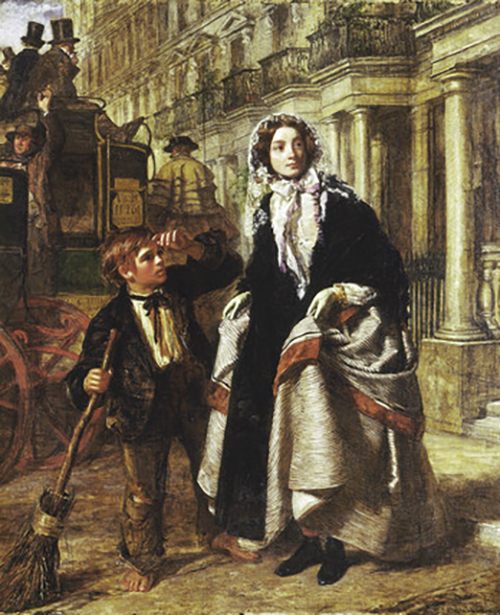
William Powell Frith’s 1858 painting of a London street. (Photo: Public Domain/WikiCommons)
Another reason for the Victorian era’s love of ghost stories is simpler, but I kind of like it the best. “Of course bad weather is always good for ghosts and ghost stories,” says Sullivan.
But over time, the concept of the Victorian-dressed ghost—women, usually, dressed in corsets and lace, with many-layered puffy dresses, sometimes wedding-dress-like, or possible a male ghost in, like, a formal coat with tails—solidified into popular culture. Partly that’s just because the stories in the Victorian era were so good that they’ve been remade or riffed on ever since they were written. There’s been a steady undercurrent of these, regardless of the current trends in horror. Look at, just for example, the 1970s: the BBC remade Lost Hearts in 1973, a remake of an M.R. James story from 1904, then The Signalman, in 1976, based on a Dickens ghost story from 1866.
The Victorian ghost story is one of those strange genres that ironed out its kinks and became solidified in its specifics incredibly quickly, within the span of just a few decades, so that most later takes on the genre have to acknowledge it in some way. The same thing happened with film noir: it was so popular and so codified during its heyday in the 1940s and early 1950s that any film noir now is, often consciously and playfully, wholly dependent on tropes from that era. (Think of Brick, Kiss Kiss Bang Bang, or even Drive, which is more of a hardboiled film.)
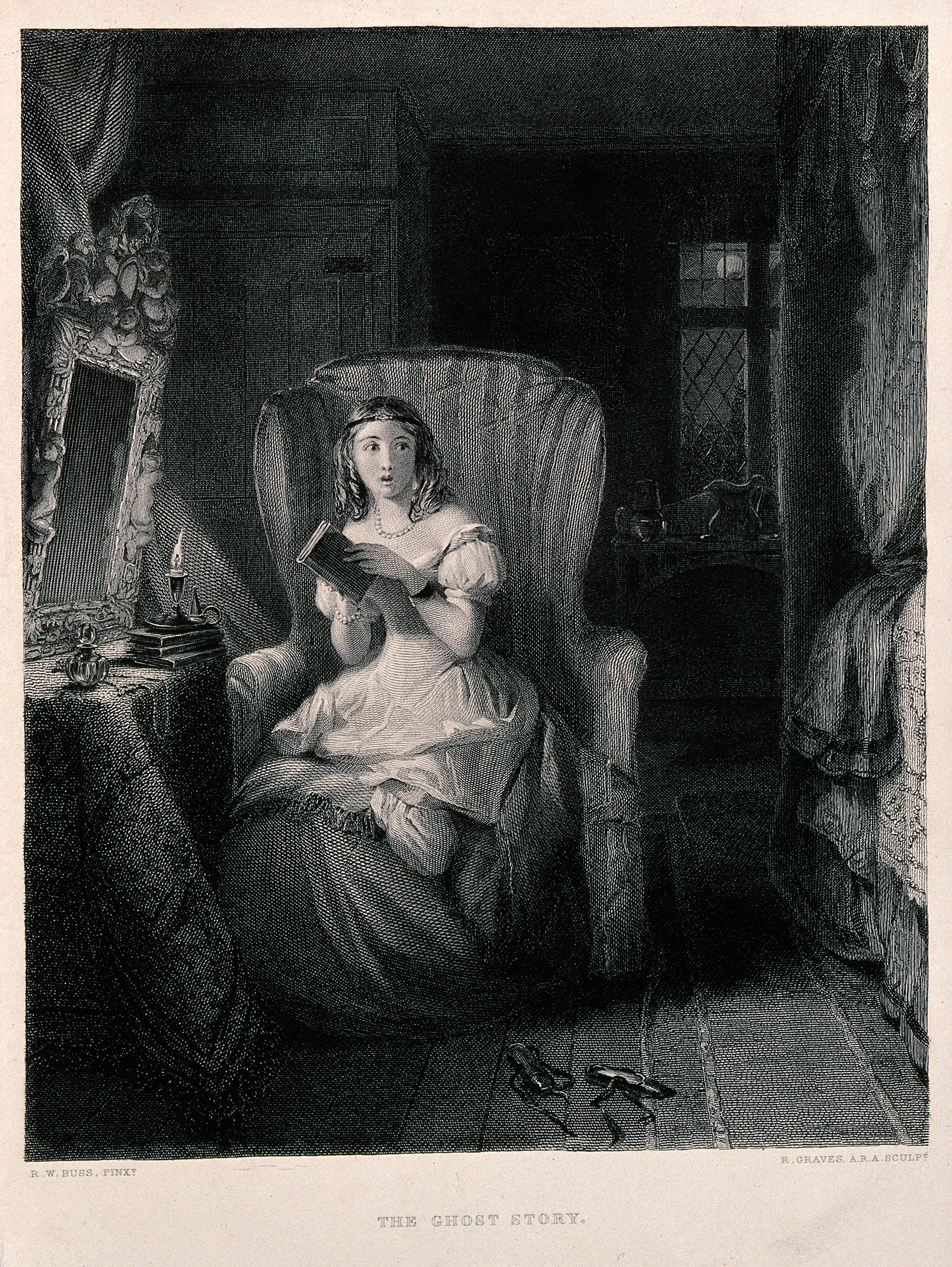
A young woman nervously reads a ghost story, 1874. (Photo: Wellcome Images/WikiCommons CC BY 4.0)
In the same way, much of the glut of ghost stories that followed the Victorian era referenced their storytelling forefathers by placing specific tropes in their stories. Clothing is an easy one: think of Nearly Headless Nick, the ghost from the Gryffindor house in the Harry Potter series, or the many, many references to the Victorian era in Lev Grossman’s thoroughly modern The Magicians series. Here’s one, from the first book in that series: “Brakebills [the book’s magical school] was largely dependent on Victorian-era technology. It wasn’t an affectation, or not entirely; electronics, Quentin was told, behaved unpredictably in the presence of sorcery.”
So it’s not so much that ghosts always wear Victorian garb; it’s more that the Victorian-era ghost stories have an outsized influence on any supernatural storytelling in the English language canon that followed. And since literature (or film; look at the recent movie Crimson Peak, a spooky Guillermo del Toro movie set in the Victorian era and using spectacular costuming) is based on building on what came before, that influence often shows itself in little nods—like a ghostly corset.

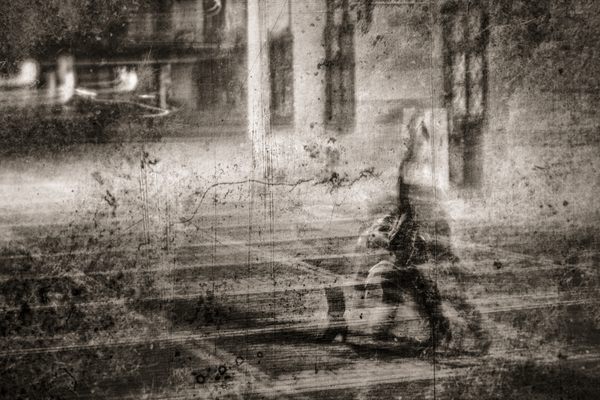








Follow us on Twitter to get the latest on the world's hidden wonders.
Like us on Facebook to get the latest on the world's hidden wonders.
Follow us on Twitter Like us on Facebook